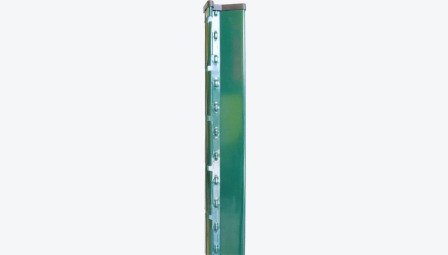Commercial chain link fence parts are essential.
Jun . 14, 2024 04:16 The Vital Role of Commercial Chain Link Fence Parts in Modern Industrial Settings
In the bustling landscape of commercial and industrial zones, the importance of secure perimeters cannot be overstated. Chain link fence parts play a crucial role in defining these boundaries, offering both physical barriers and visual demarcations that are essential for site security and organization.
The functionality of a chain link fence is multifaceted; it provides a deterrent to unauthorized access while allowing for ventilation and visibility. This balance between security and openness makes chain link fencing an ideal solution for commercial applications ranging from storage facilities and manufacturing plants to construction sites and agricultural enclosures.
The core components of a commercial chain link fence include the mesh fabric, framework (or fence rails), posts, gates, tension wires, and various types of fittings and fasteners. Each part serves a distinct purpose in the overall structure and integrity of the fence system. For instance, the mesh fabric is the interlocking woven wire that forms the actual barrier, whereas the posts serve as cornerstones that anchor the system into the ground. The framework holds the mesh in place and distributes forces evenly along the length of the fence when subjected to pressure or impact.
Gates, another critical component, allow controlled access through the fence line. They come in a variety of styles such as double-leave swing gates, sliding gates, and cantilever gates. These entrances are typically made of the same chain link material or reinforced with additional metal for increased durability.
Tension wires, running horizontally at the top and sometimes the bottom of the fence, add stability by connecting the posts and preventing the mesh from sagging over time
Tension wires, running horizontally at the top and sometimes the bottom of the fence, add stability by connecting the posts and preventing the mesh from sagging over time Tension wires, running horizontally at the top and sometimes the bottom of the fence, add stability by connecting the posts and preventing the mesh from sagging over time
Tension wires, running horizontally at the top and sometimes the bottom of the fence, add stability by connecting the posts and preventing the mesh from sagging over time
Tension wires, running horizontally at the top and sometimes the bottom of the fence, add stability by connecting the posts and preventing the mesh from sagging over time
Tension wires, running horizontally at the top and sometimes the bottom of the fence, add stability by connecting the posts and preventing the mesh from sagging over time commercial chain link fence parts. Meanwhile, fittings and fasteners like clamps, ties, and bolts ensure that all parts of the fence work together cohesively, maintaining structural soundness under various environmental conditions.
The selection of these parts requires careful consideration of factors such as climate, terrain, and the level of security needed. For example, in coastal areas prone to corrosion, stainless steel components may be preferred due to their resistance to saltwater damage. In high-security environments, additional features like barbed wire or slanted outriggers might be incorporated to enhance deterrence.
Maintenance is equally paramount to preserve the lifespan of the fence. Routine checks on the tightness of tension wires, the stability of posts, and the condition of mesh should be conducted to prevent issues before they escalate. Moreover, cleaning the fence to remove debris and applying protective coatings can mitigate the effects of rust and corrosion, ensuring the longevity of the fence parts.
In conclusion, commercial chain link fence parts embody more than mere segments of wire mesh and metal posts. They are integral components that contribute to the safety, organization, and aesthetics of commercial properties. By understanding their significance and ensuring proper maintenance, businesses can create robust and enduring perimeters that stand as testaments to modern industrial efficiency and security.
commercial chain link fence parts. Meanwhile, fittings and fasteners like clamps, ties, and bolts ensure that all parts of the fence work together cohesively, maintaining structural soundness under various environmental conditions.
The selection of these parts requires careful consideration of factors such as climate, terrain, and the level of security needed. For example, in coastal areas prone to corrosion, stainless steel components may be preferred due to their resistance to saltwater damage. In high-security environments, additional features like barbed wire or slanted outriggers might be incorporated to enhance deterrence.
Maintenance is equally paramount to preserve the lifespan of the fence. Routine checks on the tightness of tension wires, the stability of posts, and the condition of mesh should be conducted to prevent issues before they escalate. Moreover, cleaning the fence to remove debris and applying protective coatings can mitigate the effects of rust and corrosion, ensuring the longevity of the fence parts.
In conclusion, commercial chain link fence parts embody more than mere segments of wire mesh and metal posts. They are integral components that contribute to the safety, organization, and aesthetics of commercial properties. By understanding their significance and ensuring proper maintenance, businesses can create robust and enduring perimeters that stand as testaments to modern industrial efficiency and security.









 Unity
Unity Creation
Creation Challenge
Challenge Contribution
Contribution










